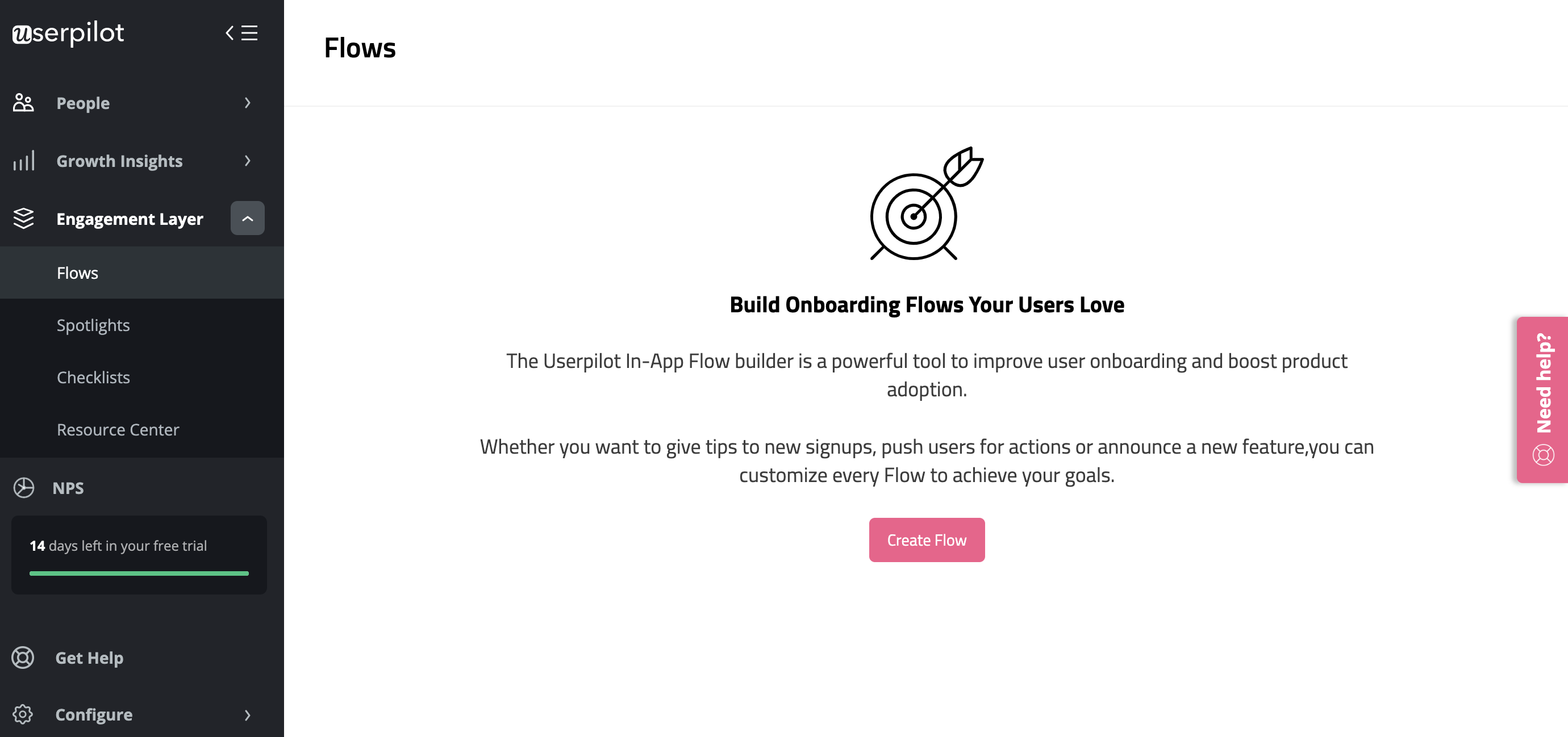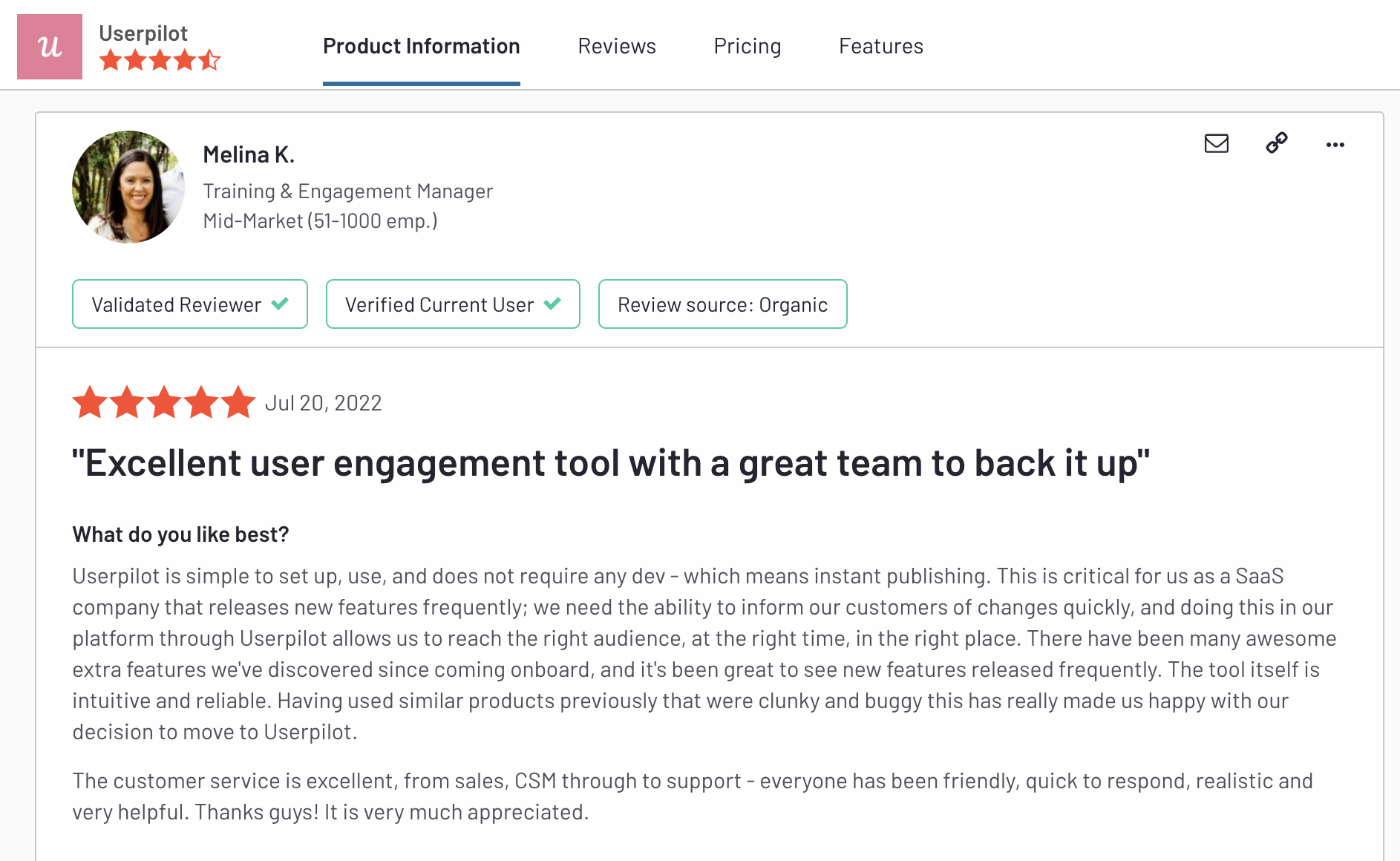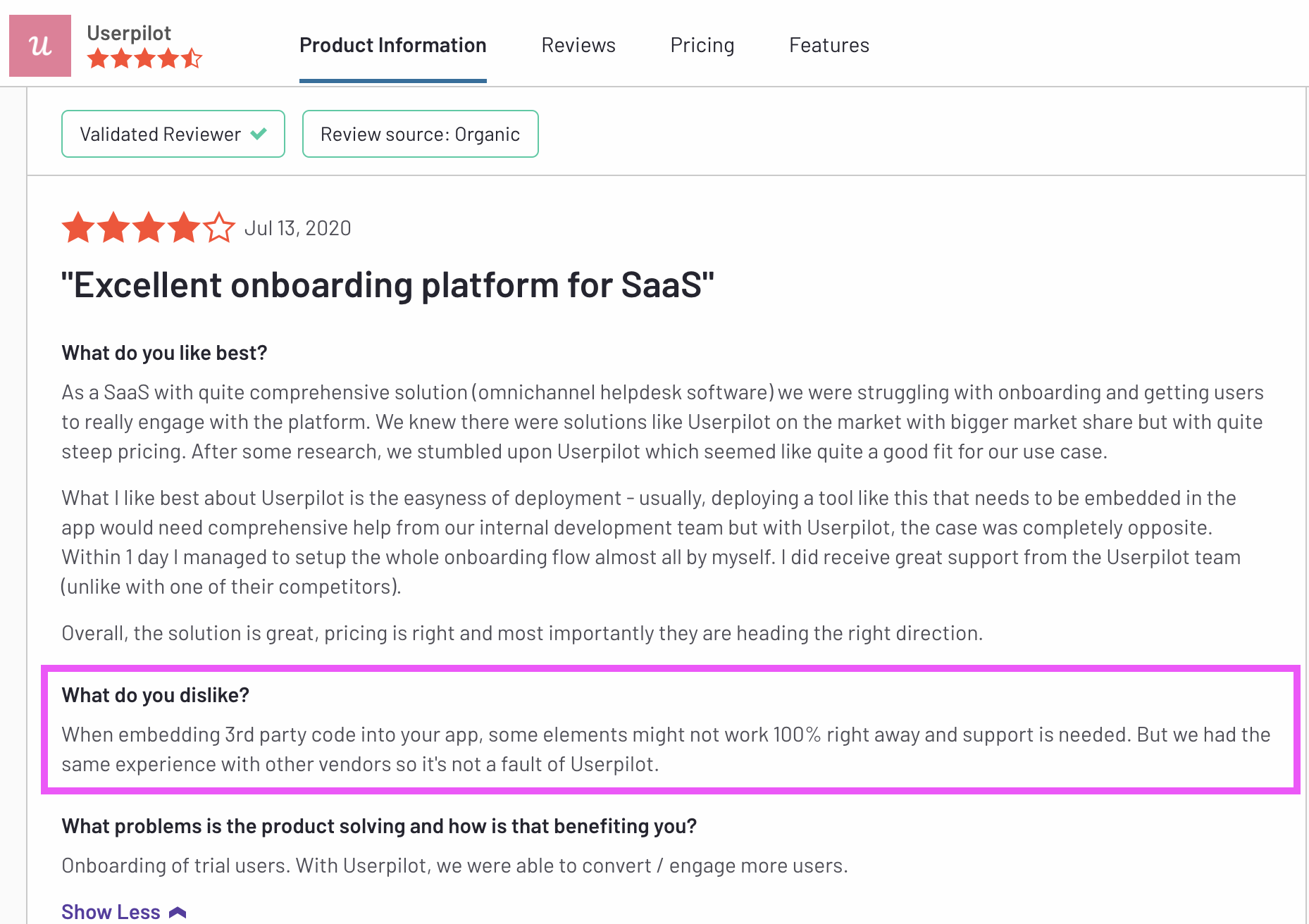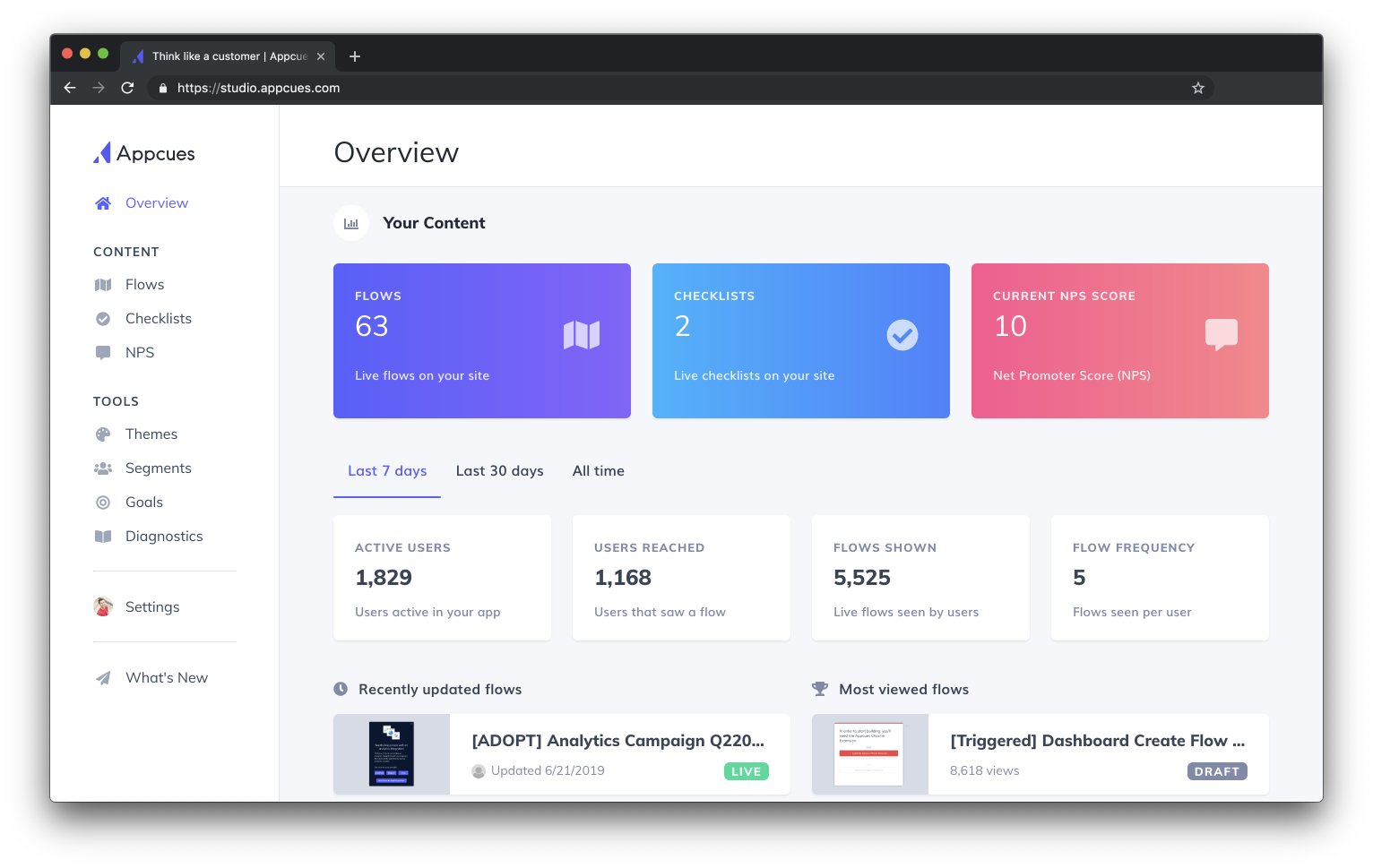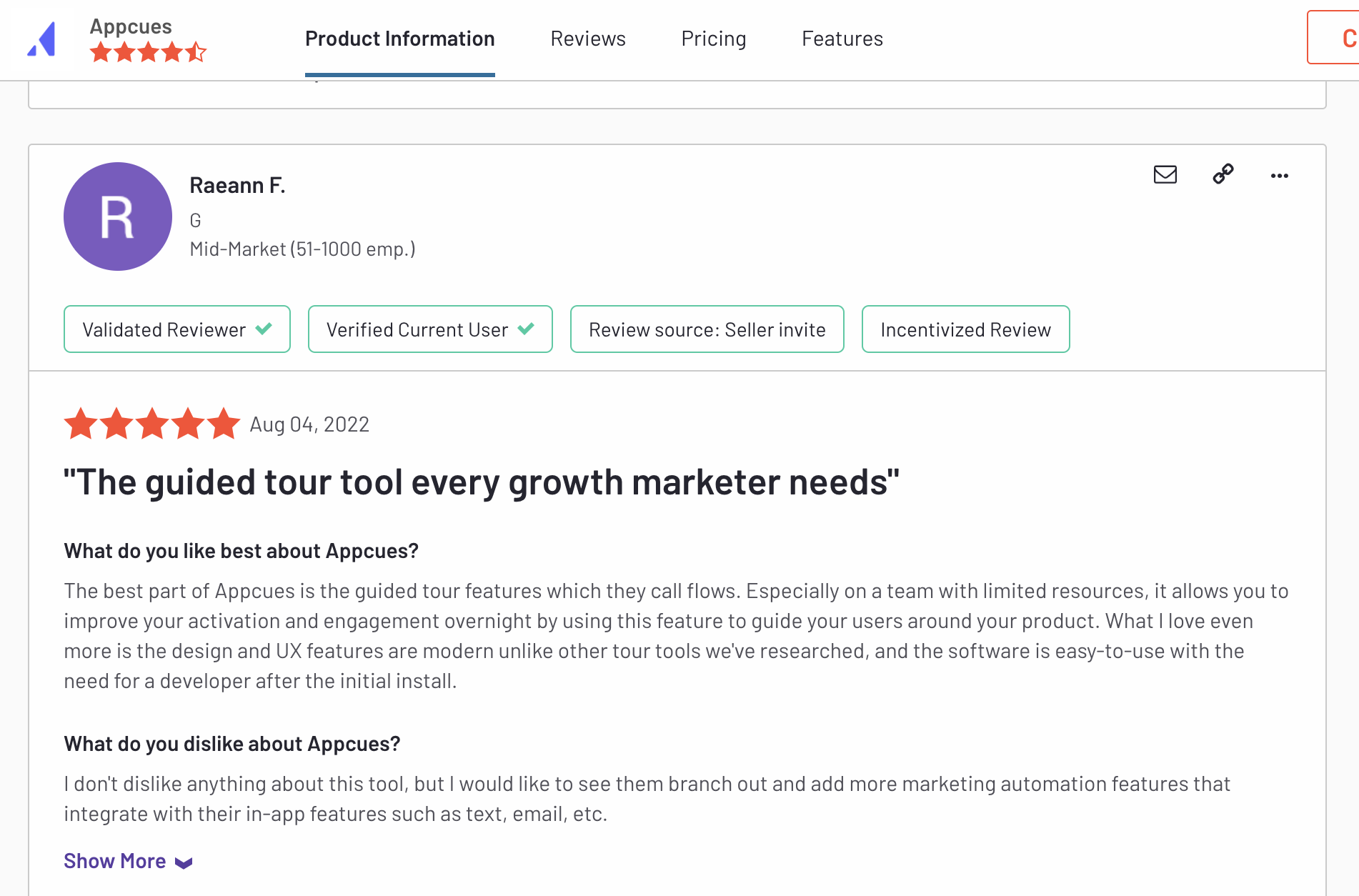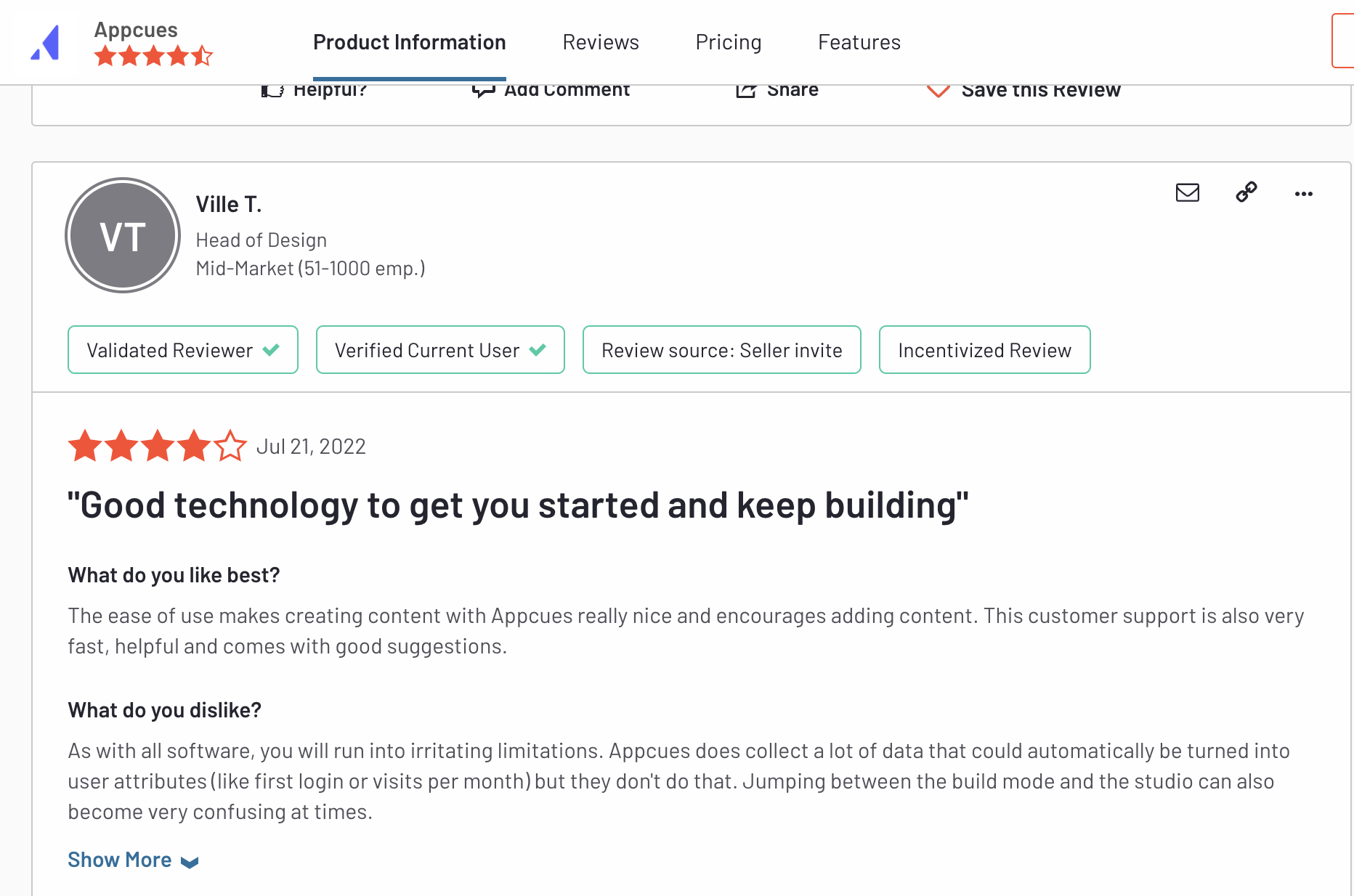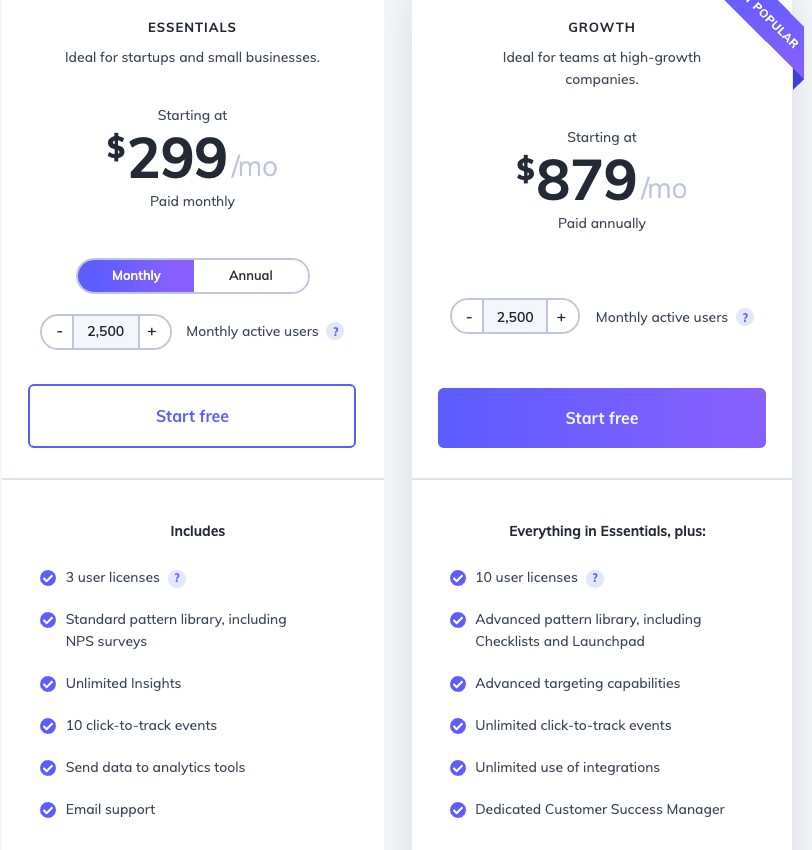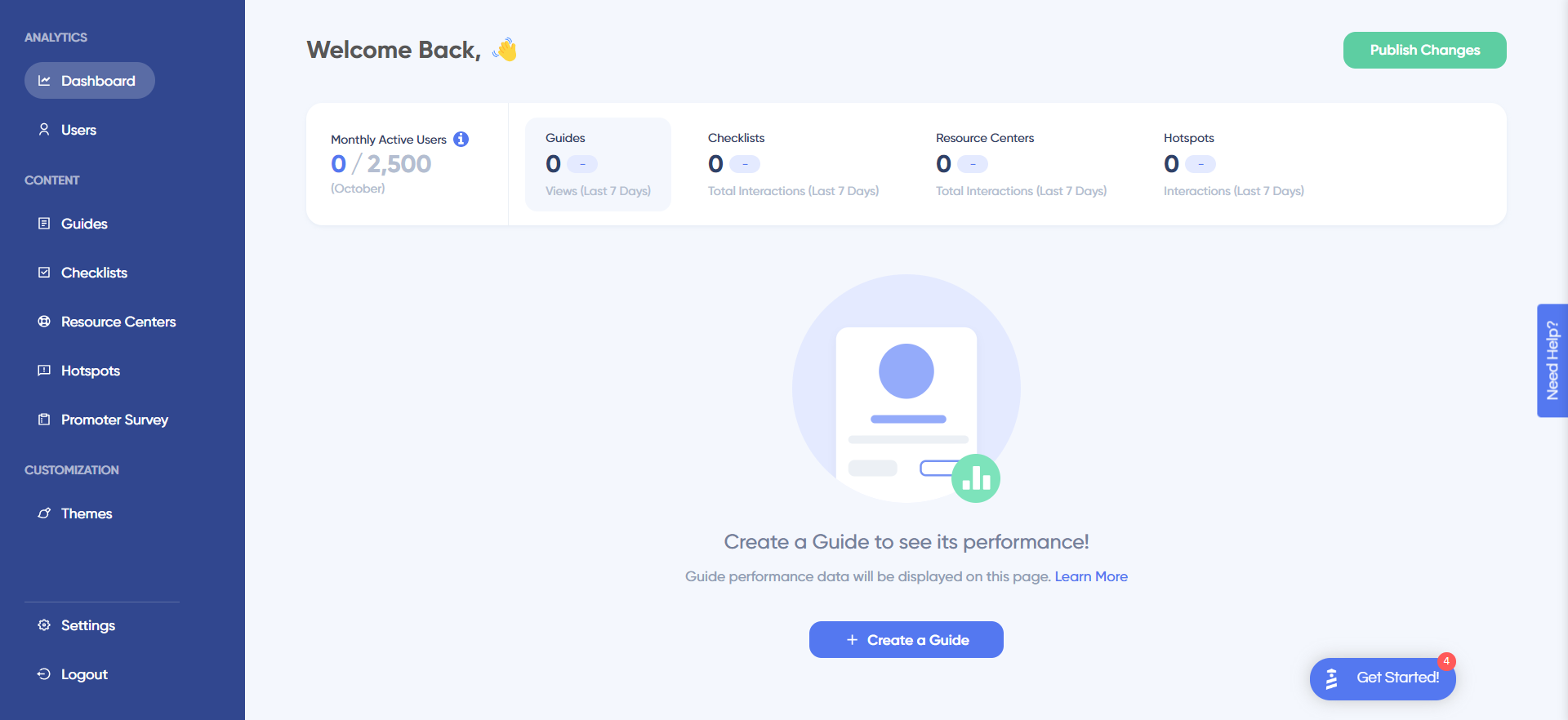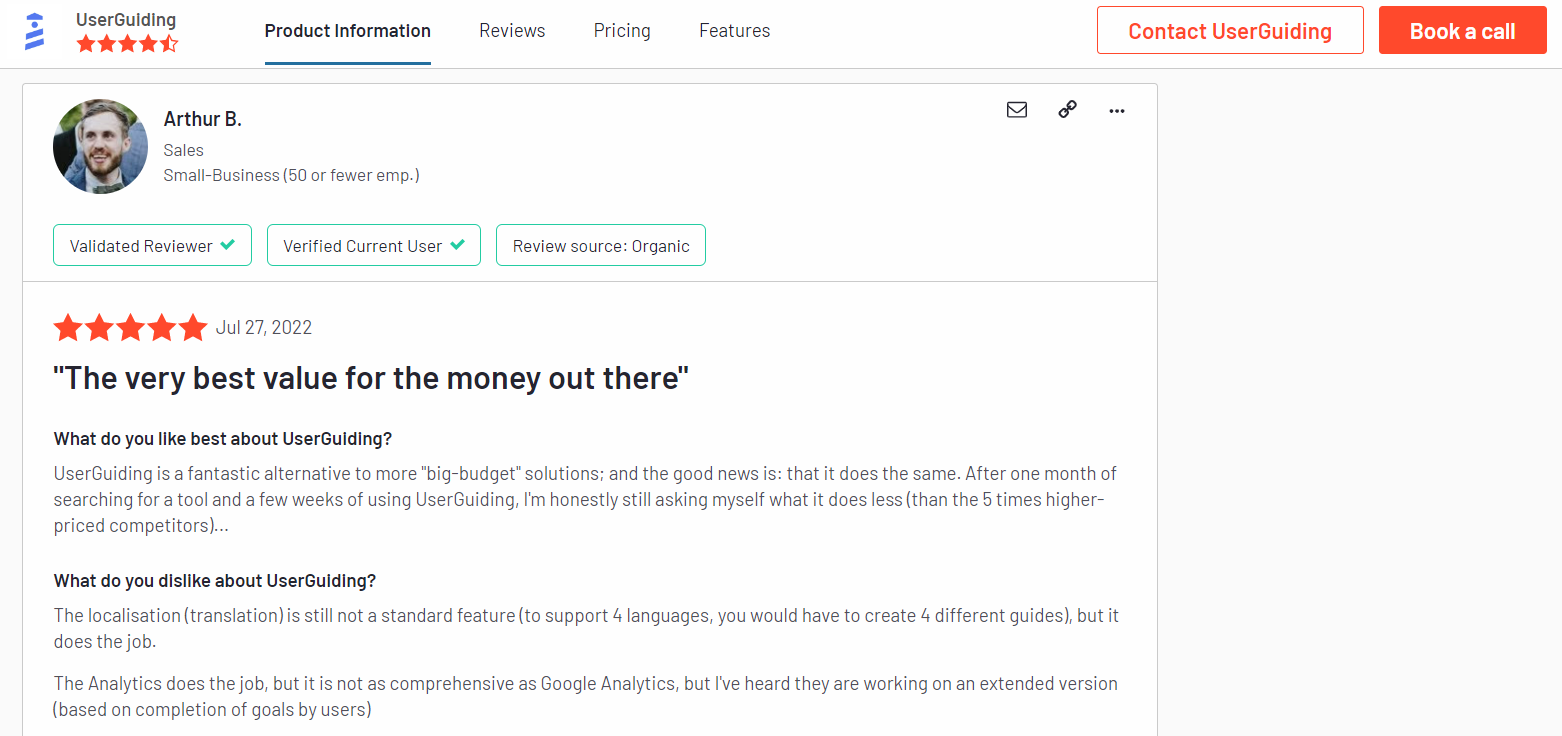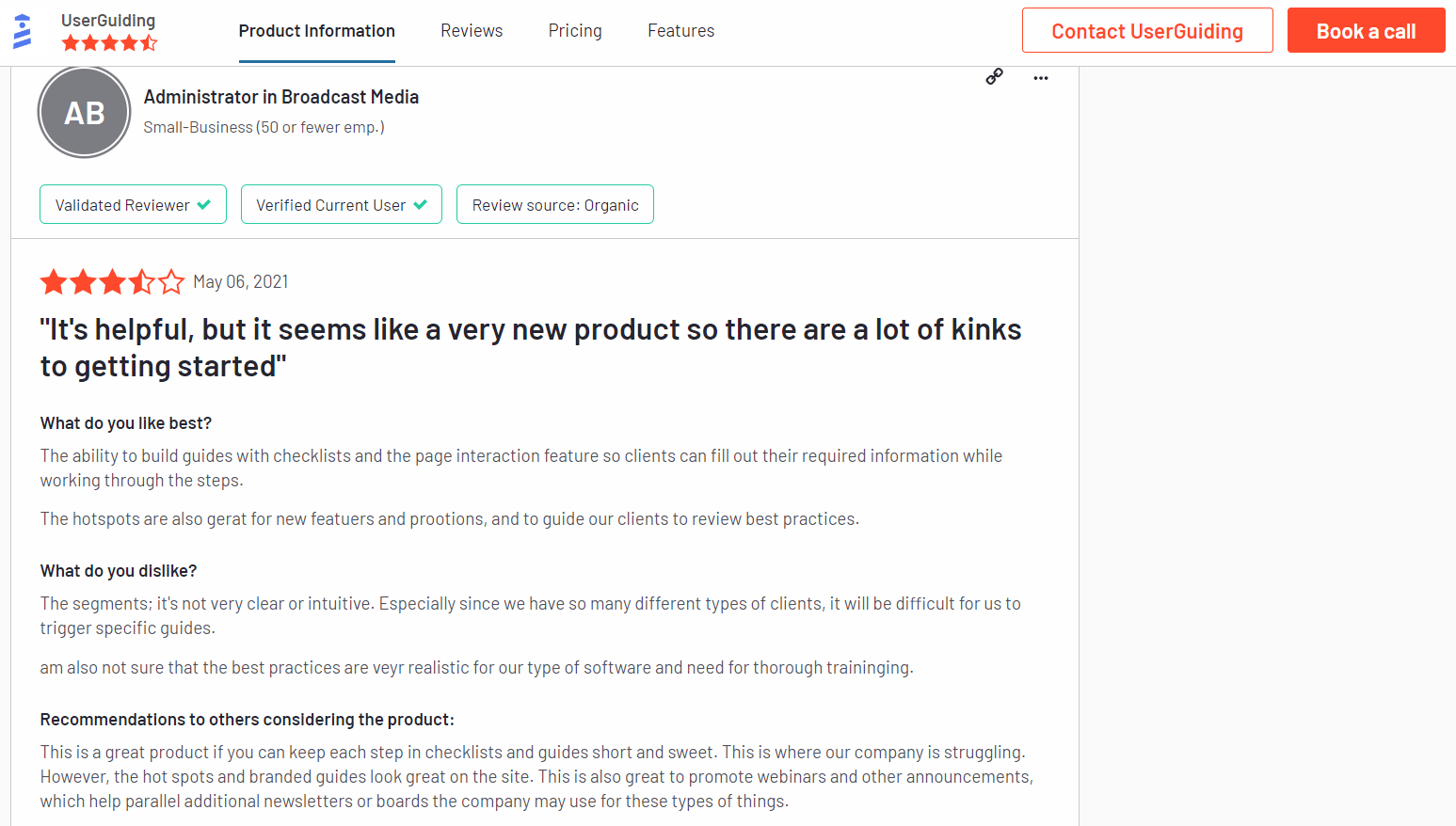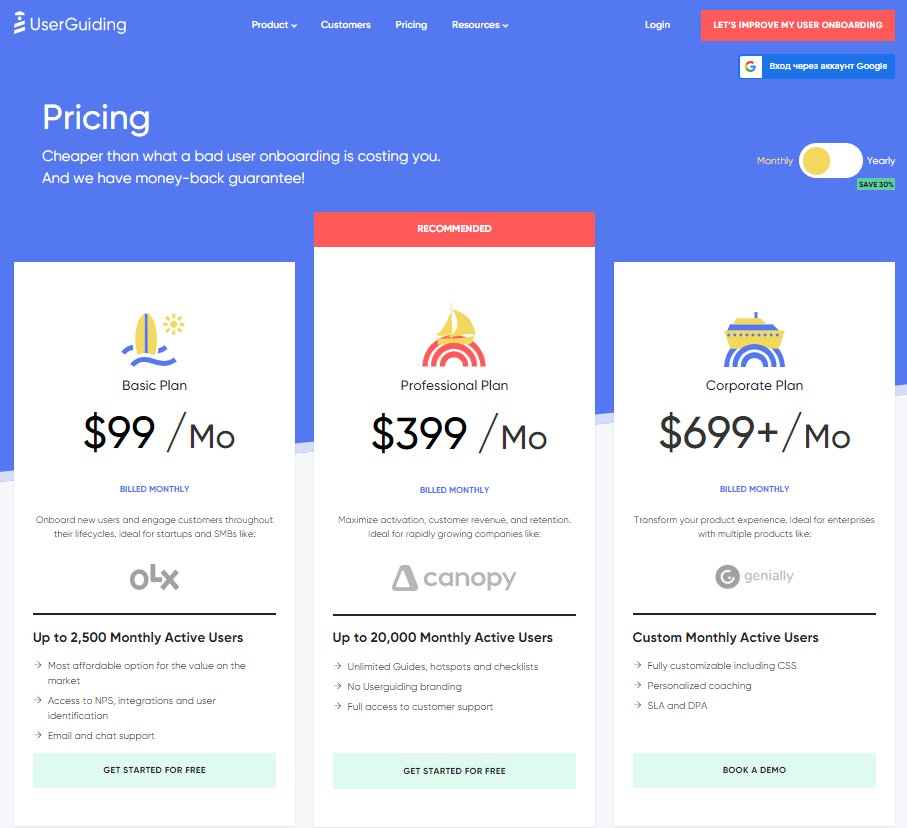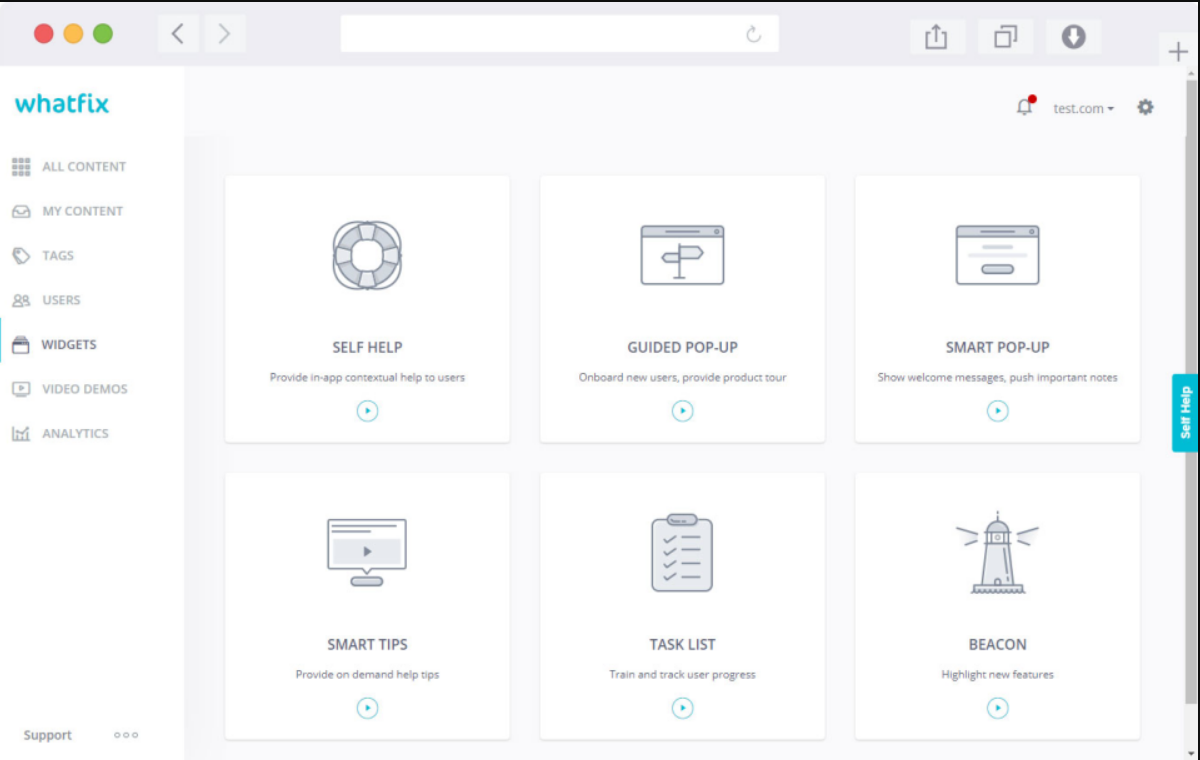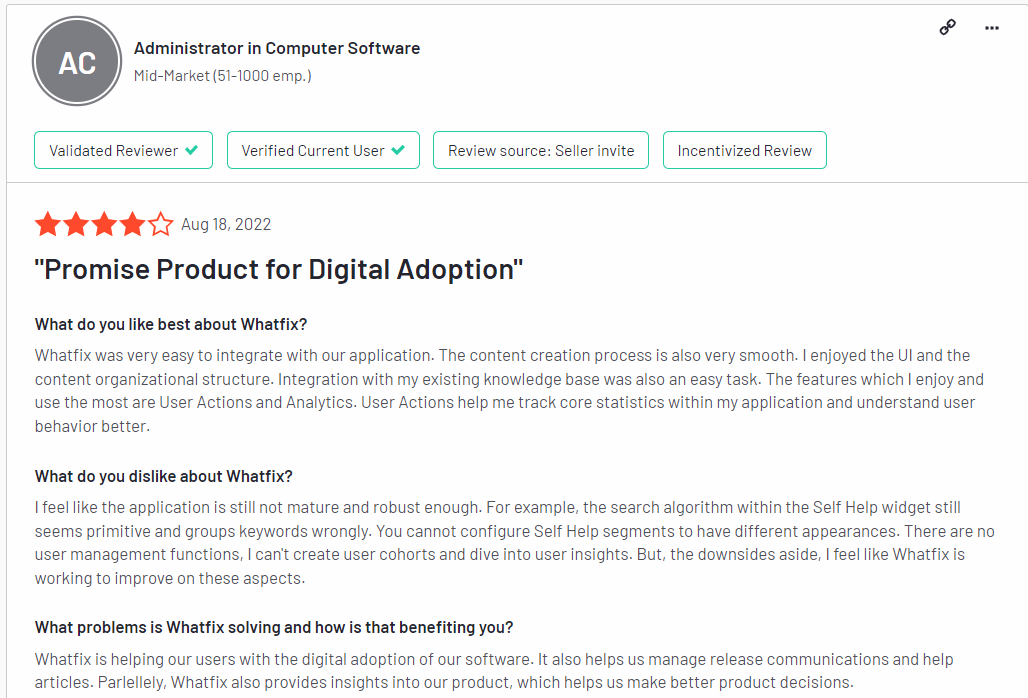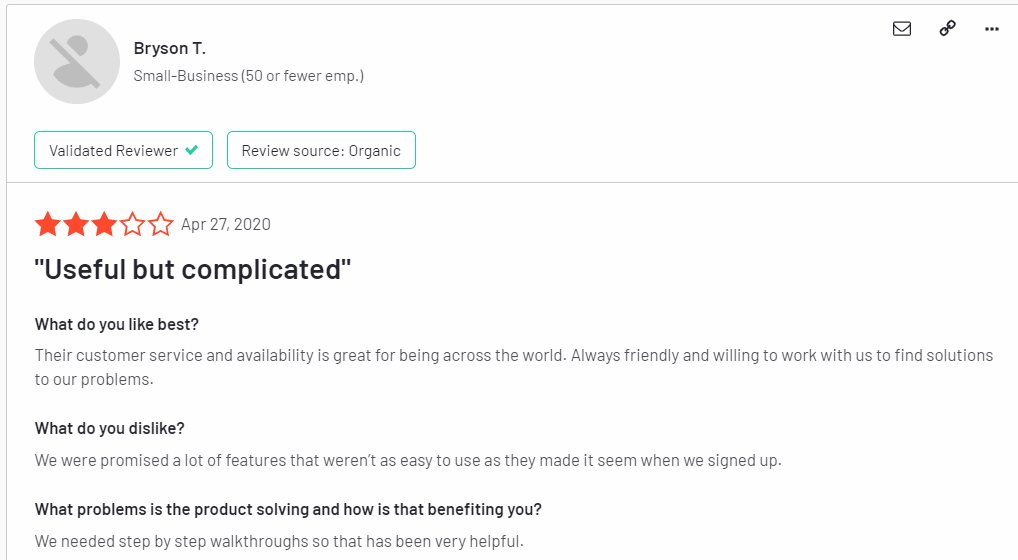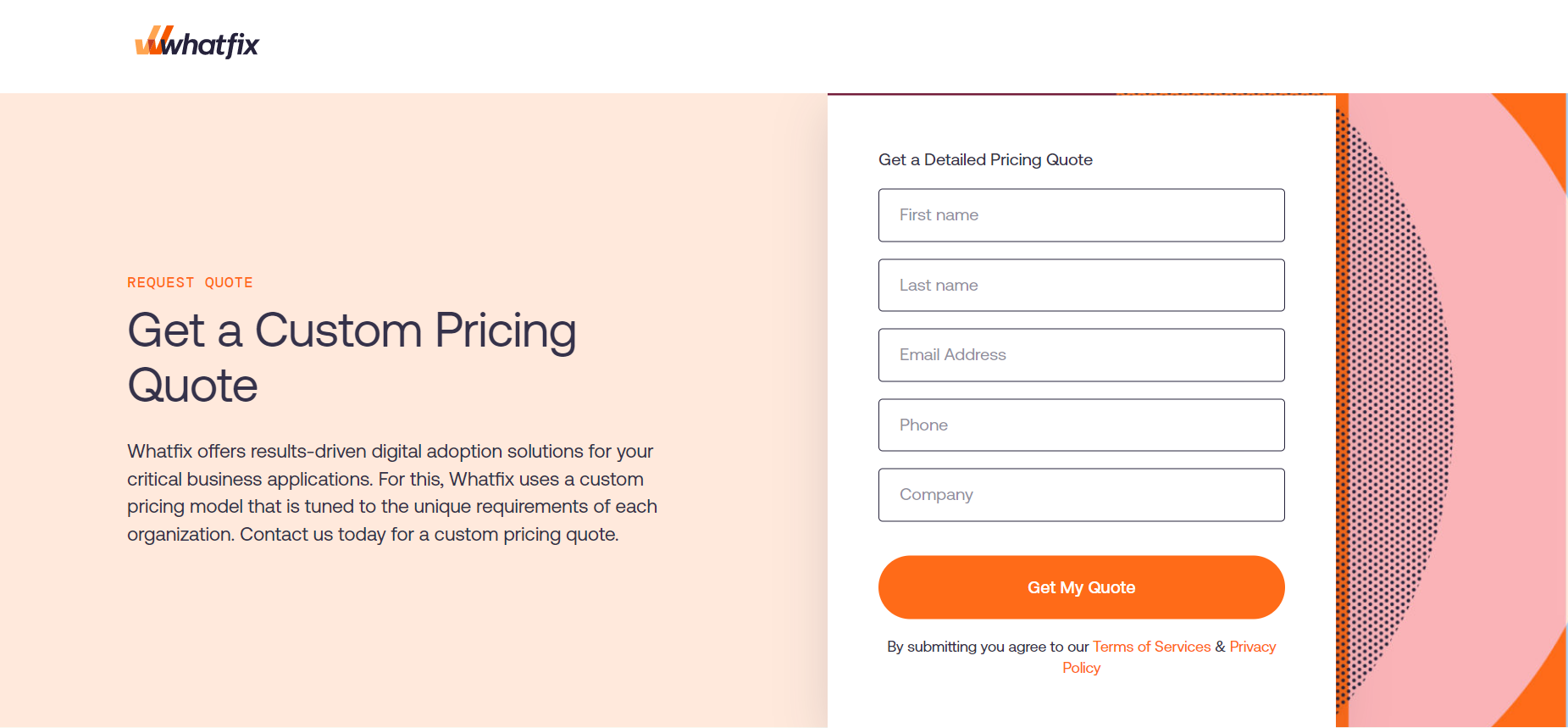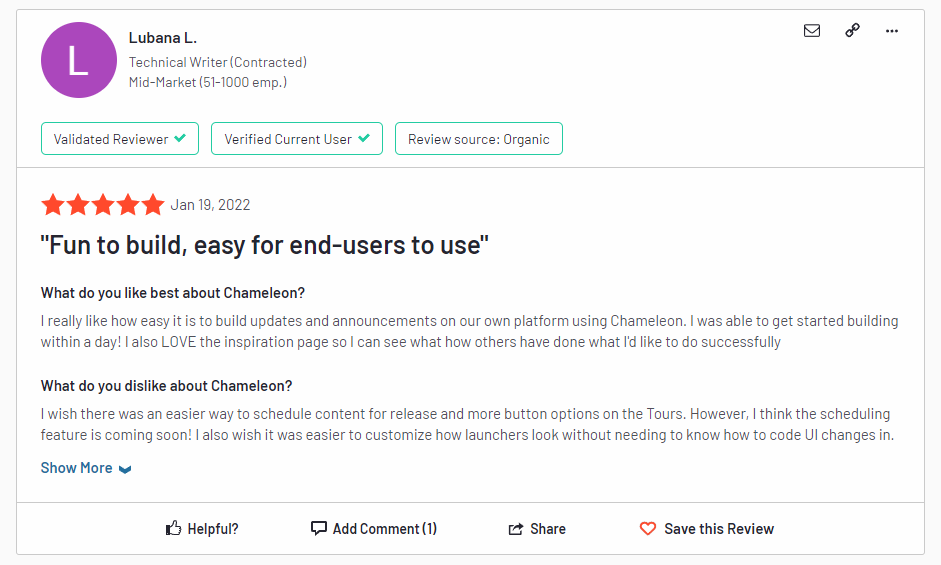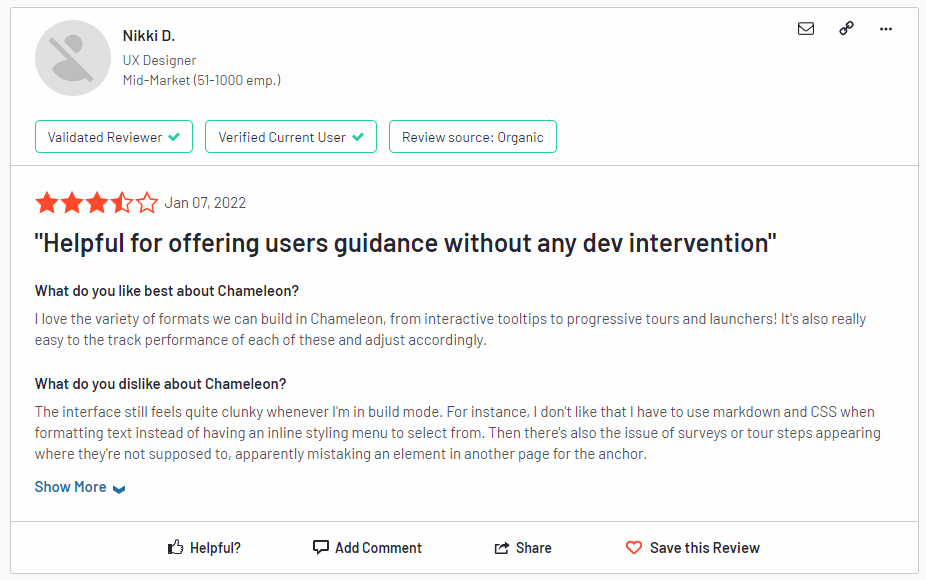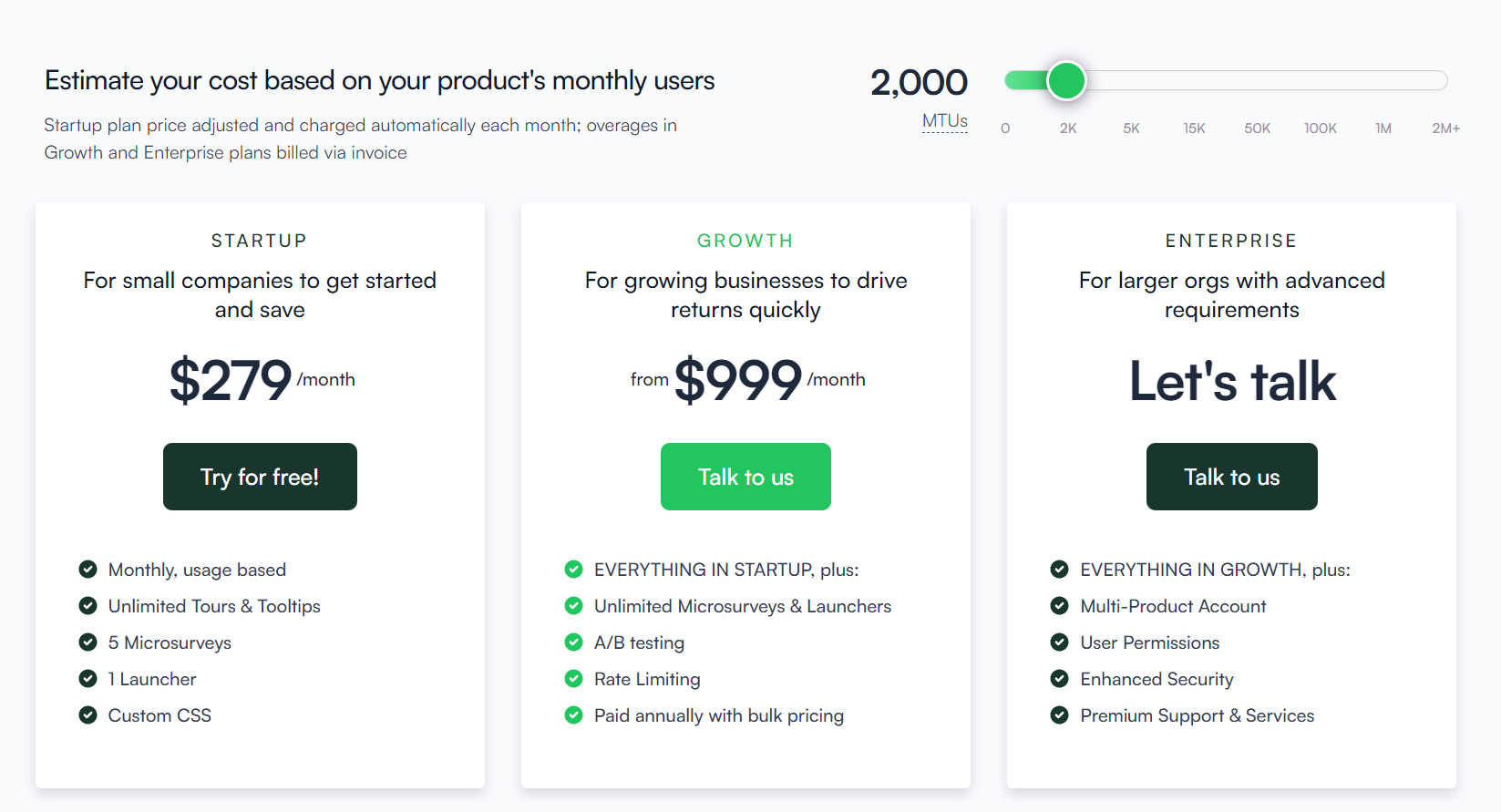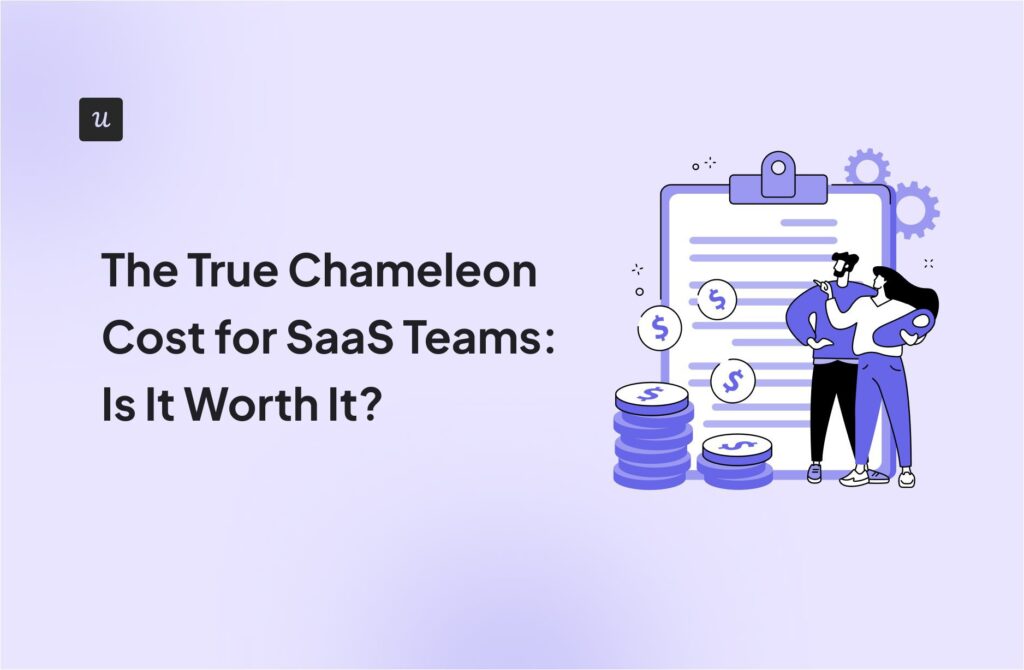
Looking for the best digital adoption tool for your SaaS company?
There are plenty of solutions for digital adoption on review sites, but they don’t make the choice any easier. The crux of the issue is – to make the right choice, you need to account for your priorities: your different jobs to be done, your budget, and the size of the company.
To help you make a decision, we’ll discuss exactly that – which digital adoption tool is best depending on the different criteria that companies are looking for digital adoption software typically have. Let’s dive in!
Try Userpilot Now
See Why 1,000+ Teams Choose Userpilot

What is digital adoption?
Digital adoption is the process by which users learn to use and ultimately adapt to new technology.
Digital adoption occurs when users can fully utilize your product or tool and get value from it while interacting as intended. The process of digital adoption begins with training new users in the use of the new software or app until they become completely proficient.
New clients might feel stressed or overwhelmed, wondering about the amount of time it will take them to truly understand and get value from your product. On top of that, they might get buyer’s remorse – thinking whether they made the right choice and that you’re worth their time and money.
When users achieve digital adoption, they learn the basic functions of the digital product and maximize the potential of the software through the use of its advanced features.
Let’s dive deeper into why digital adoption is important, and how to get it right!
Why is digital adoption important?
Product adoption is one of the main business goals for any SaaS company. If your product is adopted, you create a loyal customer base, which has a great impact on customer lifetime value and revenue.
Though digital adoption takes time and effort, it definitely should be in your priorities. Here is why:
- Digital adoption ensures that customers have seamless user experiences and derive maximum value from it.
- It increases productivity and improves workflows.
- It leads to customer satisfaction and retention as customers become frequent users of the product to solve their pain points and get their JTBD.
All in all, digital adoption is the backbone of any successful SaaS business.
Why do you need digital adoption tools?
Wondering why you even need a digital adoption tool? There are several reasons why you may need one:
A digital adoption platform is a must if you want to increase productivity and make sure that all your users get the most out of your app.
Here is why investing in a digital adoption tool has a lot of benefits:
- You can create contextual in-app guidance to shorten the learning curve and reduce the time to value.
- You’ll have the ability to segment customers and personalize the in-app flows to address their specific needs.
- With advanced product analytics functionality, you can get deep insights into user behavior, understand product usage, and detect patterns so you can act accordingly.
- Want to go the extra mile and delight your customers? With a digital adoption tool, you can also build an in-app help center and provide on-demand support to your customers so they don’t have to contact the support team each time they have a question or problem.
Must have features of good digital adoption tools
Digital adoption tools come with different functionalities and pricing packages so before buying one you should understand what features exactly you need to achieve your goals.
However, here are some of the most popular features that you can find in any solid digital adoption platform.
- A wide range of UI patterns so you can build interactive guides for your users.
- Customization capabilities so it’s aligned with your brand style and colors.
- Segmentation with multiple criteria and filtering options so you can trigger experiences based on specific events.
- Product analytics with feature usage data so you can understand how customers are behaving in the app and what keeps them engaged or vice versa.
- Ability to create an in-app resource center to host all your articles, tutorials, and videos in one place.
Keep in mind that these are the basic functionalities. Depending on your case and goals, you might also need A/B testing, funnel analysis, more advanced analytics, etc.
Best digital adoption tools
Now that you understand the importance of implementing a digital adoption platform, we will list the best tools so you can make your choice.
Here we go!
- Userpilot – for creating interactive walkthroughs and providing contextual in-app guidance
- Appcues – for personalized onboarding experiences for mobile users
- Userguiding – for driving product adoption on a budget
- Whatfix – for creating in-app guidance for employee onboarding
- Chameleon – for building an in-app resource center to unlock self-serve support
Let’s dive deeper into how each stacks up for different company sizes, budgets, and jobs to be done!
Try Userpilot – the best digital adoption solution for SaaS
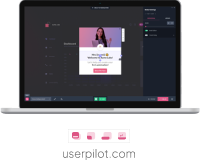
Userpilot- Best digital adoption platform
Userpilot is a powerful product adoption platform that enables you to quickly build personalized, flexible, contextually relevant in-app experiences targeted to different user segments – all without writing a line of code.
Product adoption describes the process of getting users to the point where they are experiencing value from your product.
Userpilot is a powerful product adoption platform that enables you to quickly build personalized and contextual in-app experiences targeted to different user experiences – all without writing a line of code.
It’s a great option for enterprise users too since it’s SOC 2 Type II certified and offers robust features for large-scale usage.
Here are some of Userpilot’s product adoption features that you may find helpful:
- A broad range of UI patterns to build fully customizable, contextual, and interactive in-app flows: modals, slideouts, tooltips, hotspots, driven actions, banners, and more. And – most importantly – you are not limited by plan when it comes to how many UI patterns or designs you can build.
- Advanced in-app checklists with built-in gamification elements like progress bars or ”automatically marked complete” tasks: checklists also come with analytics so you can track who is interacting with them and how.
- Fully interactive walkthroughs walk users through engaging and adopting specific features of your app.
- The self-service in-app resource center lets users search your knowledge base directly inside the app, access chat, and support but also launch guides and tutorials when they get stuck.
- User feedback tools allow you to collect insights to improve the product and the user experience, thus leading to a higher product adoption rate. You can also collect NPS data and tag responses to uncover patterns into what makes users stick, or build micro surveys for more granular data. Then you can use all the feedback collected to build user segments based on the answers and personalize the path to higher product adoption for each segment.
Want to see Userpilot in action? Get a demo and improve product adoption with contextual and personalized in-app flows that actually help users.
PROs of Userpilot
Userpilot has a number of advantages, especially for mid-market SaaS companies looking for a robust but at the same time very easy-to-use, a no-code tool for user onboarding, product adoption, and simplified product analytics. Let’s have a look at the pros of using Userpilot:
- No-code builder – Userpilot comes with an easy-to-use Chrome Extension builder.
- Multiple UI patterns – choose from a range of options to build customized flows: modals,
- slideouts, banners, tooltips, hotspots, and checklists are all at your disposal.
- UI patterns are not limited by plan – you get access to all of them on every single plan, meaning you get value even with the Traction plan (this is the entry-level one).
- Engaging walkthroughs and onboarding flows- build interactive walkthroughs targeted to distinct user segments.
- In-app help – build a resource center offering self-service support to your users, customize it with your branding, and select from a range of help options to boost user satisfaction (i.e. videos, in-app flows, chat, and more).
- Experimentation – built-in A/B testing for flows lets you explore and quickly iterate based on direct user behavior.
- Powerful feedback options- integrated NPS surveys with analytics and response tagging unlock insight into how your users feel.
- Advanced analytics and segmentation- analyze product usage and in-app flow engagement and build user segments using the data.
- Event tracking and feature tags- tag UI engagement (clicks, form fills, hovers) and group them into one custom event to track what really matters.
- More value with integrations- unlock value faster with built-in integrations with popular tools like Segment, Amplitude, Mixpanel, Kissmetrics, Intercom, Heap, and more.
Cons of Userpilot
There are, however, some downsides to Userpilot as well:
- Browser/web app only – Userpilot won’t run on mobile devices/applications.
- Doesn’t support employee onboarding- The tool is better suited for customer onboarding than for employee onboarding as you can’t build in-app guides on third-party tools.
- Missing integrations – doesn’t have built-in integrations with some tools, but it has webhooks, and Hubspot and Zapier are coming soon.
- Not appropriate for small startups on a shoestring budget (<$100)- Userpilot is a powerful, mid-market to the enterprise-level tool. So $299 a month might be too expensive for really small startups.
What users say about Userpilot as a digital adoption platform
Userpilot is clearly not for everyone, but let’s check what users like about the tool:
Userpilot is an incredible, user-friendly software that allows us to create unforgettable experiences for our clients! From basic to complex experiences, we have been able to do them all with ease! I would highly recommend this software to anyone who wants to provide their clients or users with the best product tour experience. The possibilities of what you can create are endless! – Tayla G.
Userpilot is simple to set up, use, and does not require any dev – which means instant publishing. This is critical for us as a SaaS company that releases new features frequently; we need the ability to inform our customers of changes quickly, and doing this in our platform through Userpilot allows us to reach the right audience, at the right time, in the right place. There have been many awesome extra features we’ve discovered since coming on board, and it’s been great to see new features released frequently. The tool itself is intuitive and reliable. Having used similar products previously that were clunky and buggy this has really made us happy with our decision to move to Userpilot. – Melina K.
The price-to-feature ratio is the best for Userpilot. Other cheaper tools in the market would definitely not fulfill your needs, and others like Pendo would be out of budget. Userpilot sits in that sweet spot. – Saurav S.
Obviously, no tool can make everyone 100% happy all of the time – but if you check most reviews on G2 or Capterra, Userpilot users don’t seem to complain about it a lot.
Here are some of Userpilot’s negative reviews in their own words.
A few features are missing, but there are workarounds for most of the problems that might occur. They have great customer service that will assist you if there is anything you cannot figure out. The app can be quite technical at times and there are bugs now and then, but that is often sorted really quickly. Carl
Userpilot pricing
Userpilot offers flexible pricing based on your monthly active users (MAUs). Plans start at $299 per month for smaller teams and scale as your user base grows.
Below are the pricing tiers you can choose from:
- The Starter plan begins at $299/month (billed annually) for up to 2,000 monthly active users. It includes in-app user engagement, usage trend analysis, NPS surveys, and essential product analytics—ideal for mid-market SaaS teams getting started.
- The Growth plan offers custom pricing and adds advanced analytics, retroactive event auto-capture, in-app surveys, session replay, and more. It’s the most popular choice for growing teams that need deeper insights and scale.
- The Enterprise plan offers custom pricing and includes everything in Growth, plus bulk data handling, custom roles and permissions, SOC 2 Type 2 compliance, and enterprise-level support.

Try the best digital adoption tool for your SaaS now!

Appcues- Best digital adoption platform for mobile
Appcues is another no-code user onboarding platform that helps non-technical teams track and analyze product usage. You can publish in-app onboarding tours, announcements, and launch surveys.
Unlike Userpilot, the functionality is limited if you are using the basic plans.
When it comes to driving product adoption, Appcues offers the main functionality as its competitors but highly restricts it when using its lower plan. This makes it quite pricey if you need checklists for example, which are quite an essential tool for getting users to engage and adopt your product.
Here’s how Appcues can help drive adoption:
- Building a product tour in Appcues is relatively easy. You can choose from a range of UI patterns and use a friendly Chrome extension builder. If you want to style the modals or tooltips in your tour to match your native UI, you might need to resort to CSS.
- Welcome screens are an integral part of Appcues product tour templates. You can mostly customize them as you please by adding or removing elements, micro surveys, etc.
- The flows option offers 4 main onboarding elements (modal group, tooltip group, slideout group, and hotspot group) and only 1 action – navigating to a different page.
- You can get access to building checklists but only on the more expensive plans.
- Unlike its alternatives, Appcues doesn’t offer the possibility of building an in-app resource center.
PROs of Appcues
Let’s look at some key advantages of Appcues:
- It makes it easy to build product tours with a user-friendly UI and predefined templates that can save you time.
- Can be used on web apps and mobile apps too.
- It integrates with most user analytics tools: Heap, Segment, Amplitude, and Mixpanel. This compensates a bit for the lack of in-depth analytics but means you need multiple subscriptions.
- You can use predefined flows or build your own using a good range of UI patterns.
- Allows basic segmentation and event-based flow triggering.
- It’s easy to build in-app surveys using modals or the integrated NPS tool.
Cons of Appcues
But as any tool, Appcues is not without its flows – and at this price point, we think you may really want to consider some options that offer the same or more advanced functionality, but at a lower price tag:
- Appcues lacks certain transition actions like driven actions, scroll position, or page change, which would make product tours more interactive.
- It heavily limits the functionality available in the lowest (Essentials) plan. If you need checklists, more than 10 events, or more than 5 user segments, you’ll need to upgrade to the Growth plan (starting at $879/mo payable annually, which means you need to fork out more than $10,500 to start using Appcues for more use cases.
- Appcues doesn’t have a resource center feature, meaning you can’t use it to offer self-service support to your users.
What users say about Appcues
What do Appcues users share about their experience? Overall users feel positive about Appcues.
Here’s an example summarizing some key points about its features and the value it offers. You can find more reviews on G2 or Capterra.
The best part of Appcues is the guided tour features which they call flaws. Especially on a team with limited resources, it allows you to improve your activation and engagement overnight by using this feature to guide your users around your product. What I love even more is the design and UX features are modern unlike other tour tools we’ve researched, and the software is easy-to-use with the need for a developer after the initial installation. – Raeann F.
However, there are some points that could be improved:
As with all software, you will run into irritating limitations. Appcues does collect a lot of data that could automatically be turned into user attributes (like the first log-in or visits per month) but they don’t do that. Jumping between the build mode and the studio can also become very confusing at times. – Ville T.
Appcues pricing
All things considered, Appcues does not offer the best value for money compared to some Appcues alternatives – at $249 per month. If your product has 2,500 active users, the costs for different plans are:
- Essentials: $249/month (Up to 3 user licenses)
- Growth: $879/month (Up to 10 user licenses)
- Enterprise: Custom (Unlimited user licenses)
Userguiding- Best digital adoption platform for mid-businesses
UserGuiding is a lower-cost, entry-level product adoption tool offering a range of features to help companies onboard new customers and boost product adoption.
UserGuiding excels at building simple onboarding experiences for users. It includes a no-code builder, segmentation options, and easily added UI patterns like hotspots, tooltips, and modals.
Although it also has some other goodies like a resource center and analytics, the meat of this product is its onboarding flow builder. If all you’re looking for is a relatively easy way to build simple onboarding flows, this could be a great choice for you. However, people looking for more analytics, customization, or complex integrations should probably look elsewhere.
Here’s how UserGuiding can help drive adoption:
- Offering in-app guidance with interactive product walkthroughs to educate, inform and update customers on the go.
- You can add different types of onboarding elements to your flows. This includes modals, tooltips, hotspots, and checklists to repeatedly engage users and help them adopt the product
- There is also an option to build an in-app resource center so you can incorporate learning materials in one place and provide on-demand support
If you’re looking to build complex in-app flows and experiences, UserGuiding is a great fit. However, you don’t get all its features in the Basic plan.
They also don’t have a dedicated customer success manager, and you can’t really customize your flows. Not to mention that it comes with UserGuiding branding which can only be removed if you go for a higher plan ($299).
PROs of Userguiding
There are some advantages when it comes to choosing UserGuiding. Here are its pros:
- For small startups or independent businesses, the price is an attractive element to consider.
- A good variety of UI patterns to choose from when building flows and guides
- Unlike some of the more expensive options, you can choose to add a Resource Center (a bonus for self-service support).
- For a budget tool, UserGuiding still offers integrations with other applications, such as Mixpanel, Hubspot, Woopra, Slack, Webhook, etc.
Cons of Userguiding
Though UserGuiding is a solid product many improvements are still needed. The cons of using UserGuiding include:
- There are many bugs and performance issues when using the tool. The UI is also fairly tricky to navigate.
- It has limited functionality, particularly on the basic plan. There you only have a small range of features available – all with the UserGuiding watermark/branding.
- Technical knowledge is required to get the maximum out of this product.
- Customization and design options for UI patterns aren’t the greatest.
What users say about Userguiding
If you check the product review sites, most people like using UserGuiding.
Here are some reviews from real users:
Creating guides/checklists are easy to implement. It does not take a lot of time to make adjustments when you need to make changes.
You can go live with a simple guide or checklist within minutes. I was able to go live within a few days of getting started. – Administrator in Computer Software
However, some people think there’s too much friction due to bugs. Let’s have a look at some negative reviews to see why users complain about:
It is a bit buggy, sometimes it lags or freezes.
And, some people think that there is still room for improvement:
The analytics felt a little elementary. Other than the Mixpanel integration, it wasn’t possible to analyze user data directly on the UserGuiding dashboard. There was an API we could use that required some set up, but this was something I expected to be baked into the product for sure.- Administrator in Computer Software
Userguiding pricing
UserGuiding’s pricing model is far simpler than others on our list. There are three tiers, each one charging a set amount for access to certain tools.
Here are its packages:
- Basic will give you access to only the most essential onboarding tools: Starting at $99/mo or $69/mo (if you buy the yearly contract), this budget option has a few limitations to consider (i.e. just 1 Team Member, a limit of 20 guides, and 2 checklists, UserGuiding branding on all UI patterns).
- Professional adds unlimited guides, hotspots, and checklists. Starting at $399/mo or $299 /mo if billed yearly.
- Corporate gives you access to everything plus personalized coaching. Starting at $699/mo or $499.mo for a yearly plan.
Whatfix- Best digital adoption platform for employee onboarding
Whatfix is one of the top digital adoption platforms around and a driver of innovation in this space.
Whatfix offers a well-made product that allows you to create user flows, knowledge bases, and task lists to get new users engaged and learning. On top of this, their analytics platform is easy to understand and helps you keep track of behavior analytics, guidance analytics, and user feedback all in one place.
Unlike most of its competitors that don’t offer employee onboarding functionality, Whatfix supports that. This makes Whatfix a great option if you aim to onboard your new employees with an automated tool.
The same user onboarding functionality applies to employee onboarding as well. In short, here is what you will get:
- Create interactive product walkthroughs and flows to guide your employees and provide in-app training
- Use modals, checklists, tooltips, and beacons to make the onboarding process smooth and highlight the right features at the right time
- You can also track your new employee’s progress as they go.
PROs of Whatfix
There are many advantages when it comes to choosing Whatfix. Here are its pros.
- Easy to create flows, even for non-technical team members.
- Allows you to develop knowledge bases for self-help solutions.
- Ideal for both customer and employee onboarding.
Cons of Whatfix
But at the same time, Whatfix has some cons so it’s better to get an overview if you’re thinking of buying it:
- User experience issues, including bugs and sometimes spotty customer service.
- Fewer analytical features and views than you might like.
- Lacks in-depth style customizations.
- It’s difficult to integrate some of the scripted code in the admin integration sections without the help of a Whatfix support team member.
- No free trial option despite it being stated on the homepage.
- It’s targeted at enterprise accounts so small companies might get ignored.
What users say about Whatfix
Overall, Whatfix is a good tool and customers are happy with the product. Here is what their customers say about the product.
Our Whatfix Customer Success Manager Kritika has been amazingly responsive to our questions and creative in finding solutions.
Their team really helped us during a project we were doing, and I think they would be great for any company looking for help. This is a must to onboard customers and drive retention.
Though Whatfix is considered a solid tool in the market some people have complaints. Mostly they are related to complications for non-technical people and instability.
Here is what they say:
We were promised a lot of features that weren’t as easy to use as they made it seem when we signed up.
The tool itself is challenging for the less technical people to use the tool, as you need to know the css classes to show flows and steps.
unexpected issues and roadblocks in implementation that can cause delay or a need for an alternate approach
Whatfix pricing
Whatfix doesn’t have any pricing plans on its website. Instead, you’ll need to speak with one of their team members to get a custom quote tailored to your needs and organization.
Otherwise, you can request a free trial to see if Whatfix works for you.
Chameleon- Best digital adoption platform for employee onboarding
Chameleon is a digital adoption platform with a difference: while the other tools discussed are mostly no-code, Chameleon will require some developer involvement.
Nevertheless, it’s a powerful and effective tool that works in a similar way to Userpilot and offers similar features: styling, analytics, templates, goals, A/B testing, and checklists.
However, it doesn’t offer a resource center, or dedicated NPS, and it’s a lot worse value for money with limited features in the basic plan, which is over $150 more expensive for the same number of MAUs.PROs of Chameleon
Chameleon is a robust tool for your onboarding and adoption needs. Here are the main pros to consider if you’re still deciding:
- Offers a good range of in-app messaging and UI patterns. You can create custom modals, slideouts, tooltips, hotspots, launchers (checklists or resource hubs), and more.
- Good segmentation options, you can either build different user segments inside the product, or you can integrate your Chameleon account with other tools and import your data.
- Can be used on 3rd party tools, meaning you can use it for employee onboarding too.
- Offers a good range of two-way integrations: Mixpanel, Segment, Intercom, Customer.io, Segment, Hubspot, etc.
Cons of Chameleon
While Chameleon is a great tool, the main downside is the cost and restrictions you get with it. Here are the main cons of the tool:
- There are some limitations to user onboarding flows. You can’t run multiple in-app experiences at the same time, as you can in Userpilot. Instead, Chameleon enables you to create user onboarding campaigns (different sequences of product tours shown over time).
- It’s built for single-page apps: Chameleon can’t build flows that run over multiple URLs.
- Doesn’t offer a self-service resource center where users can access multiple guides and tutorials or contact support. It does provide launchers that are similar but more restricted. A launcher can be a checklist or a list of resources, but can’t be both.
- It has a steeper learning curve and it’s not a completely no-code tool.
- The Startup (starter) plan is quite restrictive and expensive (starts at $349/mo for 2500 MAU and includes 1 Launcher only and 5 micro surveys). You will need to go for Growth ($999/mo) if you want to drive product adoption.
What users say about Chameleon
Users appreciate Chameleon’s versatile functionalities. Let’s see what they have to say about it.
I love the variety of formats we can build in Chameleon, from interactive tooltips to progressive tours and launchers! It’s also really easy to track performance of each of these and adjust accordingly. The interface still feels quite clunky whenever I’m in build mode. For instance, I don’t like that I have to use markdown and CSS when formatting text instead of having an inline styling menu to select from. Then there’s also the issue of surveys or tour steps appearing where they’re not supposed to, apparently mistaking an element in another page for the anchor. -Nikki D
Chameleon is a good tool overall and it’s loved by its users. Most complaints are about the price and some limitations such as customization of tours and reporting and analytics.
I wish there was an easier way to schedule content for release and more button options on the Tours. However, I think the scheduling feature is coming soon! I also wish it was easier to customize how launchers look without needing to know how to code UI changes in. – Lubana L.
There is limited reporting and dashboarding functionality within Chameleon currently. – Administrator in Financial Services
I think the software is a bit on the pricey side, but since it lets us do things that we would normally need our developers to do, we are truly saving in the grand scheme of things. It means we can focus on features and bug fixes, instead of building a new communication method that would only be used internally!-Nathalie L.
Chameleon pricing
Chameleon split their pricing options primarily by the number of monthly active users, but you should keep in mind that the Startup plan also has limited features and might not be enough for interactive user onboarding and adoption for SaaS products:
- 0 – 2500 MAUs: Startup plan from $349/mo, Growth plan from $899/mo
- 2000 – 3000MAUs: Startup plan from $419/mo, Growth from $899/mo.
- 3000 – 5000 MAUs: Startup plan from $489/mo, Growth from $899/mo.
- 5000 – 10,000 MAUs: Startup plan from $517/mo, Growth from $999/mo
Disclaimer: with the Startup plan you only get 5 microsurveys and 1 launcher, no A/B testing, no Goals, and no localization.
Best digital adoption tools: Conclusion
As we’ve seen from the post above, there are several reasons why you should be using a digital adoption tool.
To provide stellar digital adoption, you need to have the right tool in your stack.
Hopefully, you’ve found this post helpful in choosing the right digital adoption tool for your SaaS!
Still can’t decide about the best digital adoption tool for your SaaS?


